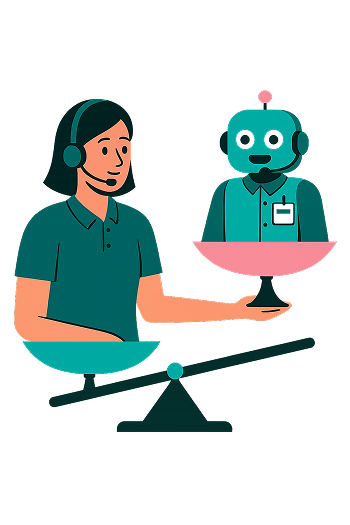Companies are hyperfocused on acquiring new customers. But the truth is that acquiring new customers is significantly more expensive than retaining existing customers. Therefore, the fastest path to sustainable growth is to nurture and grow existing customer relationships and reduce customer churn.
Reducing customer churn can be a tough task because customers churn for a variety of reasons — only some of which are within your control. Someone may stop using your product or service because of market changes, new pricing structures, a bad customer service experience, or something else entirely.
In this article, we’ll focus on practical ways you can reduce customer churn and tackle this expensive issue.
1. Stay Top of Mind to Reduce Customer Churn
It’s an all too common scenario: A brand spends months (and a hefty amount of money) marketing to a prospect in hopes of conversion, only to go silent once a purchase is made or a contract is signed. The harsh reality is that once that point of contact disappears, so does a customer’s loyalty toward your brand. The solution? Remain top of mind with customers to reduce customer churn.
Implement a strategic communications roadmap that ensures you remain in contact with customers at frequent intervals post-purchase. Send out product updates, solicit feedback, and share interesting industry news or trends — aim to build and nurture a relationship beyond the initial purchase to increase the likelihood that customers will stick around.
2. Keep Your Promises
Remember those long months spent building a relationship with a prospect? You likely made a few promises throughout that time about how your product or service can meet the needs of said customer. Now is the time to double down and ensure those promises are kept.
As Etie Hertz, co-founder and CEO of Loris.ai, discussed on CHURN.FM, too many businesses fail to keep their promises. He advises brands to focus on becoming a better partner to their customers by consistently tracking back to those initial goals and promises, have ongoing conversations about the goals and promises, and use those conversations to build trust with your customers. When customers trust you they are more likely to come to you with issues or concerns and be open to discussing solutions, before deciding to hit the road.
3. Implement a Live Chat Program…With Humans
Relying too heavily on automated chatbots can frustrate customers and lead to increased customer churn. After all, a whopping 61% of customers are now willing to walk away after just one bad customer service experience.
Customers want to be able to connect with brands via live chat programs. But as your business grows, your customer service agents become inundated with an increasing number of live chat tickets. When that happens, it may be tempting to implement automated solutions to outsource customer support. But beware — this isn’t always the best move. While automated chatbot solutions are great for handling routine customer service questions, customers crave a human touch and empathetic communication. Humans need to do the heavy lifting when it comes to complex requests and building meaningful relationships.
4. Be Proactive in Reducing Customer Churn
One of the biggest mistakes a brand can make is waiting to woo back a customer until it’s far too late. Instead, brands need to proactively identify customers who are on the cusp of churning before they actually take the plunge.
A great place to monitor for at-risk customers is within your brand’s live customer service chat program. Within your live chat program, customers are offering massive amounts of valuable data about their sentiment toward your brand via the questions they ask and the tone in which they ask them. Tools like Loris.ai can help brands make the most of this data. Loris uses AI to analyze the sentiment of customer conversations and quantify how a customer feels toward your brand at a given moment in time.
Loris scores customer conversations and identifies red flags (like tense language or tone) for customer service agents, helping them prioritize customer tickets and navigate tough conversations. The tool strategically suggests language to users based on real time conversational cues, which helps to ease customer concerns and promote more empathetic conversations while also reducing average handle time.
5. Offer Incentives (When Necessary)
Incentives and appeasements can help reduce customer churn, but can also be extremely costly for your business. It’s important to understand when and how to implement these strategies so they have maximum impact, without hitting a maximum budget. Loris real-time agent guidance strategically suggests best-practice language and tone to agents that can quell customer concerns — and suggests appropriate appeasement offers in line with current company policy and enables leaders to safely and efficiently test removal or reduction of offers that can cut costs without negatively impacting customer retention.
Need help reducing customer churn and having better conversations with your customers? Contact Loris.ai today.

